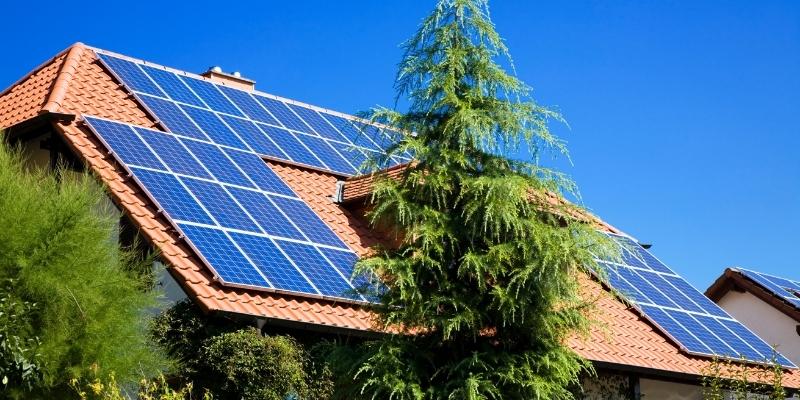How Much Money Can I Save With the ECO4 Program?
The scheme’s specifics have not yet been worked out, but based on the prior run, the prospective returns look promising. When installing new boilers together with additional energy-saving measures like cavity wall, underfloor, or loft room insulation, many suppliers might normally cover all upgrades through ECO3. The government increases the potential for energy savings in your home, significantly reducing your CO2 emissions by coupling full support to another measure.
Again, securing an energy-efficient and custom panel that is matched to your home’s demands is the first step before asking for grants. Since you don’t want to apply grants to panels that are subpar or inappropriate for your home, doing this will guarantee that you are saving from the very beginning.
3. Smart Export Warranty (SEG)
As of 1 January 2020, the Smart Export Guarantee (SEG) is the sole kind of solar panel financing available in the UK.
Small-scale low-carbon electricity generators can get paid for the extra energy they export back to the grid thanks to the SEG.
All licensed providers are now required to provide their clients with an export tariff, even though this is not a direct government grant. Suppliers with more than 150,000 clients must offer a tariff; those with fewer clients may participate voluntarily.
Under the SEG, all households with standard solar panel installations (up to 5MW capacity) are eligible. To measure the exports, a smart meter must also be installed in the home. For energy exported from solar battery storage systems, the majority of electricity providers also provide a tariff.
Solar panels are an excellent example of a green home improvement project thanks to this incentive.
4. Reduced VAT on Products that Save Energy
From April 2022 through March 2027, households can now take advantage of zero VAT on the materials and installation of energy-efficient measures. The average family with rooftop solar panels will save more than £1,000 on installation and £300 yearly on their energy costs thanks to the elimination of the VAT on renewables, which was just 5 percent and already rather cheap.
The VAT-free period expires after five years, and the rate then goes back to 5 percent. Thus, the elimination of the VAT in addition to the grants for solar panels puts householders one step closer to obtaining renewable energy sources than ever before.
The permanent removal of the precise eligibility requirements that previously applied to the 5 percent lower rate is also welcomed by the new zero VAT regulations. The complete information is available on the government website.
5.(FIT) Feed-In Tariff
Initiated in 2010, the Feed-in Tariff operated well for several years. Those who are now registered will continue to get benefits from the FIT scheme even though it stopped accepting new applications in 2019.
For each unit (kilowatt per hour) of power they create and for any excess energy they sell back to the grid, participants in this program receive a specified amount of money.
The precise sum received varies according to the system’s size, kind of technology, and date of installation. With the payments lasting a total of 20 years from the date of registration, the initial investment’s payback period is cut in half.
After selecting a licensed installer, you had the option of choosing to either receive payments from your energy provider or from a list of registered suppliers. There are two categories of payments:
-
- The Generation Tariff, which is based on the aforementioned variables, is a fixed percentage of all energy produced and consumed. Depending on the size of the system, the price per kWh/h ranges from 6.38 to 13.88p;
- The extra electricity you sell, for which you will receive 4.77p per unit, is subject to the export tariff. Half of the entire amount of energy you create can be sold.
What was the Free Solar Panel Scheme?
In the past, you could get solar panels for free from companies that would rent your roof space for up to 25 years if you couldn’t afford to buy them. With this plan, a business would offer to give away solar panels and handle installation and maintenance at no cost in exchange for Feed-in Tariff (FIT) payments.
As an alternative, a program known as “solar buyback” has emerged. Under this program, businesses offer homeowners a large sum up front in exchange for collecting the FIT payments the homeowners would have otherwise received. To decide if this repurchase program would be worthwhile, you must weigh an offer like this against the overall FIT payments you would receive.
Is UK Solar Panel Financing Valid?
Yes, it is the answer. If you are a homeowner who satisfies the requirements, you may be able to recover most of the expenses associated with installing solar through RHI and all of the costs associated with other energy-saving measures, such as insulation, through ECO4.
Keep up to date with grants in order to maximize your savings — GreenMatch routinely evaluates solar panel financing, and our content is updated to reflect the most recent legislative changes.
Additionally, it’s crucial to make sure you submit grant applications to the appropriate panels. Obtaining funding for a panel that is subpar or inappropriate for your house serves no purpose. The ideal panel is created specifically to meet the needs of your home, and we make it simple for you to reach an informed decision by comparing up to 4 locally built options.
On the government’s website, you can discover more details about the various energy incentives, including all the information you need about grants for solar-related equipment as well as grants for other renewables like heat pumps and boilers.
If you decide to invest in solar energy or other clean energy sources after gathering the data, you can return to Greensavings Network to get free, non-binding quotations for solar panels, heat pumps, and boilers.

